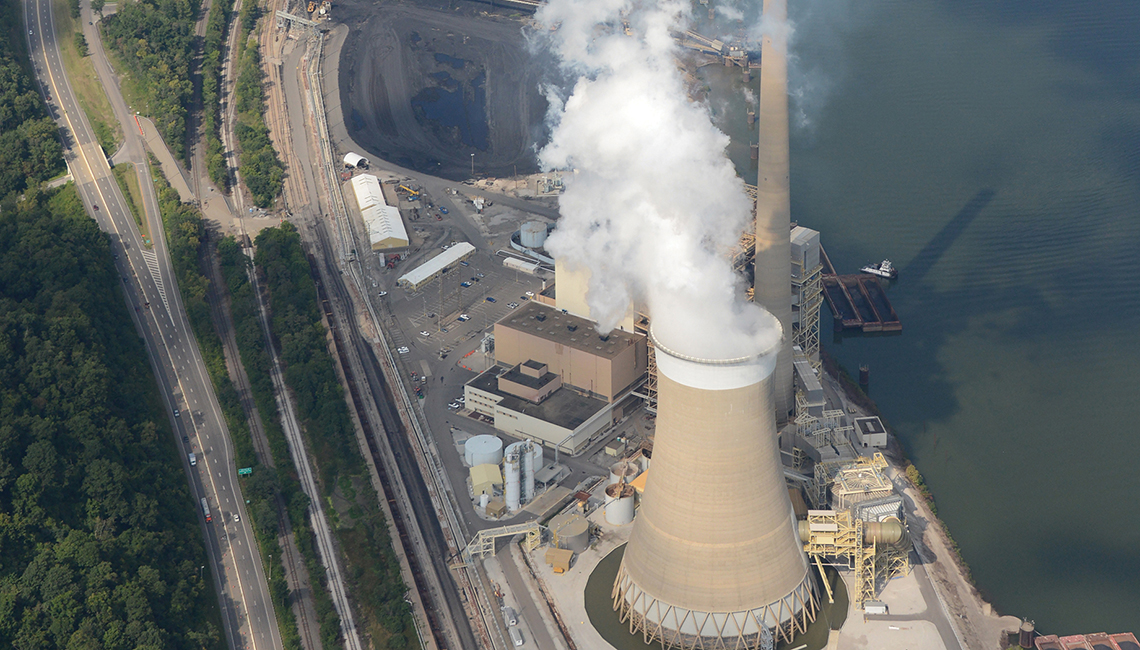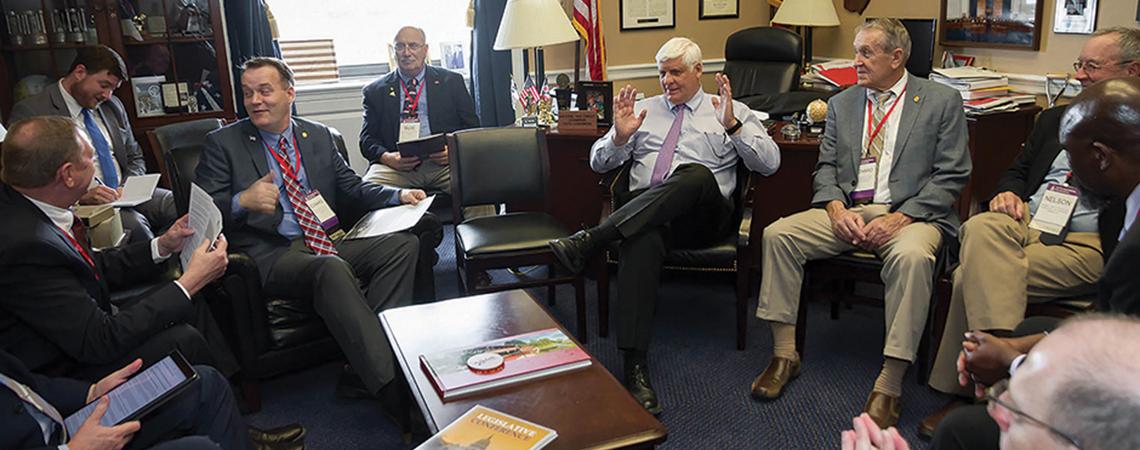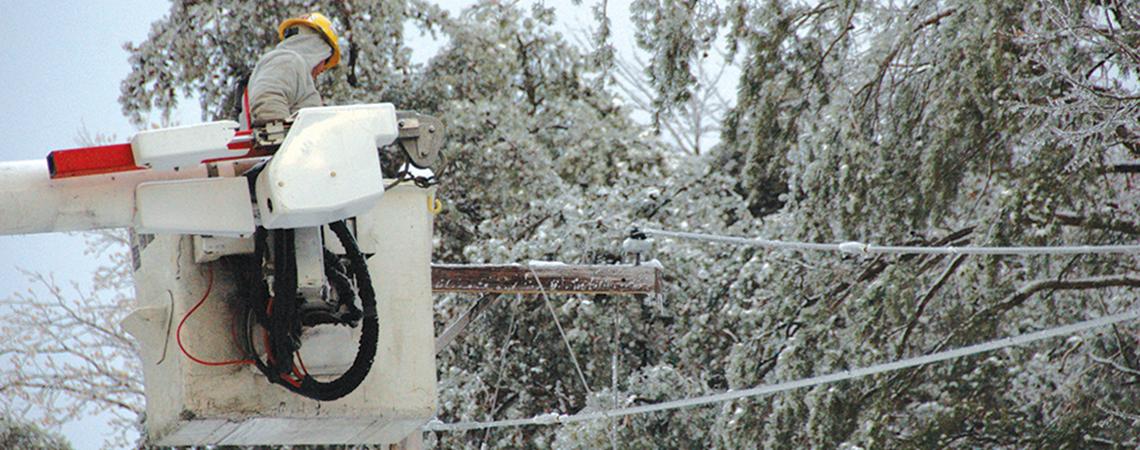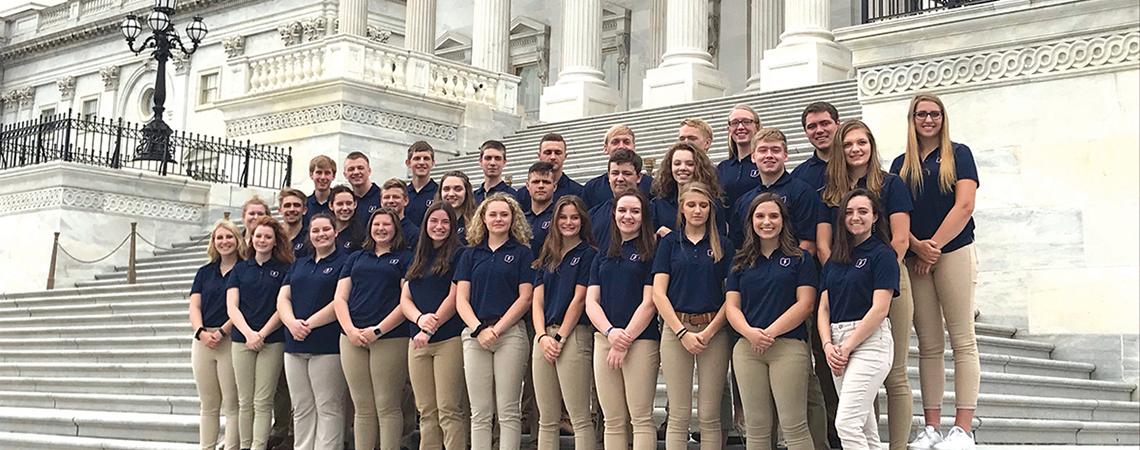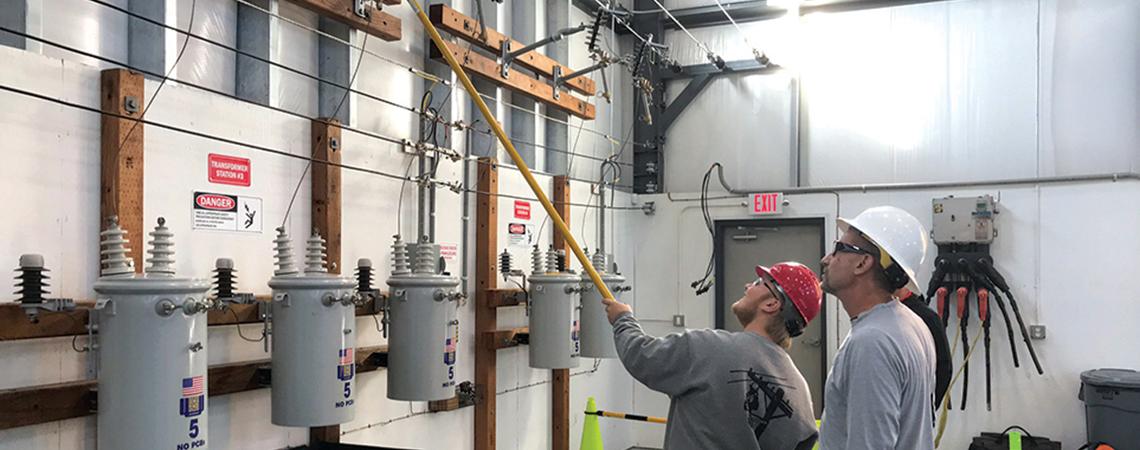Shortly after the first electric cooperatives formed in the 1930s, their leadership began to see some of the same challenges that small businesses everywhere face — chief among them being a lack of the buying power that larger companies enjoy.
Co-ops needed supplies, equipment, insurance — in short, lots of products that larger companies pay less for because they buy them in bulk. The problem was most apparent in the co-ops’ main product: the electricity they provided to their members. Individual cooperatives had to purchase wholesale power from other utilities at whatever rate those utilities charged.
Government relations
The leaders of the co-ops started talking among themselves to find ways to negotiate better contracts to buy electricity, and they saw immediate benefits. It didn’t take long before they began to see real value in working together in other aspects of their business, as well. So, in 1941 — a little more than five years after Piqua-based Pioneer Electric Cooperative set the first co-op pole in the nation, and 80 years ago this summer — co-ops officially formed a statewide trade association: Ohio Rural Electric Cooperatives.
The most significant development to come from the association is undoubtedly the creation of Buckeye Power, a generation and transmission cooperative wholly owned by Ohio’s co-ops. In 2015, the two companies — the power generation co-op and the services co-op — united under one name: Ohio’s Electric Cooperatives.
“The early cooperative leaders were dedicated to improving the lives of the people in their communities, and I marvel at the initiative and courage it took to make electrification happen,” says Pat O’Loughlin, president and CEO of Ohio’s Electric Cooperatives. “I also take note every day of the foresight those leaders had when they created this association and gave it the flexibility to evolve and meet challenges that they honestly couldn’t have dreamed of at the time.”
In 1959, once the early leadership had well established that they could negotiate better power rates as a group, they soon realized that they had the means to produce the power themselves, and they established Buckeye Power.
“Co-ops were at the mercy of AEP,” says Steve Nelson, CEO and general manager of Coshocton-based Frontier Power Company, one of 24 electric distribution cooperatives that operate in Ohio. “All those pioneers got together and decided they could never get ahead as long as they had to rely on other people for their electricity.”
By the time the association’s 25th anniversary rolled around in 1966, construction was nearly complete on two coal-fired generating units in Brilliant, Ohio — one owned by Buckeye Power. The co-ops built a third unit that came online in 1977, and took over full operational control of all three units in 2018. Together, those units can produce up to 1,230 megawatts — more than enough to power all of Ohio’s co-op homes and businesses, even at peak usage.
While power rates were the statewide association’s first order of business, its role and capabilities have expanded to a wide array of professional and technical services:
- Power, engineering, and technical services, such as load control.
- Government relations and lobbying efforts, both in the Ohio Statehouse and in the U.S. Congress.
- Mutual aid and disaster recovery coordination.
- Education and training programs for co-op employees, from lineworkers to board members.
- Scholarship and youth programs, such as the Youth Tour to Washington, D.C.
- Communications services, including digital and multimedia projects as well as Ohio Cooperative Living magazine.
They’re tasks that the co-ops could do on their own — but it makes more sense for one centralized source to do those jobs, providing expertise, consistency across co-op borders, and economies of scale.
“If every small cooperative around the country had to go out individually to hire all of these services, the cost would be astronomical,” says Ed VanHoose, general manager of both Wellington-based Lorain-Medina Rural Electric Cooperative and Attica-based North Central Electric Cooperative. “Instead, we have our associated organizations, such as the statewide association, that turn us into a large collective. Instead of having to do everything on our own, we can do it together. Cooperatives just would not be able to provide the level of service we do without them.”
“Honestly, the best thing to come out of the association is the unity among the cooperatives,” Nelson says. “There is a spirit among all of us, to this day, that we are all better together than we would be separately.”
